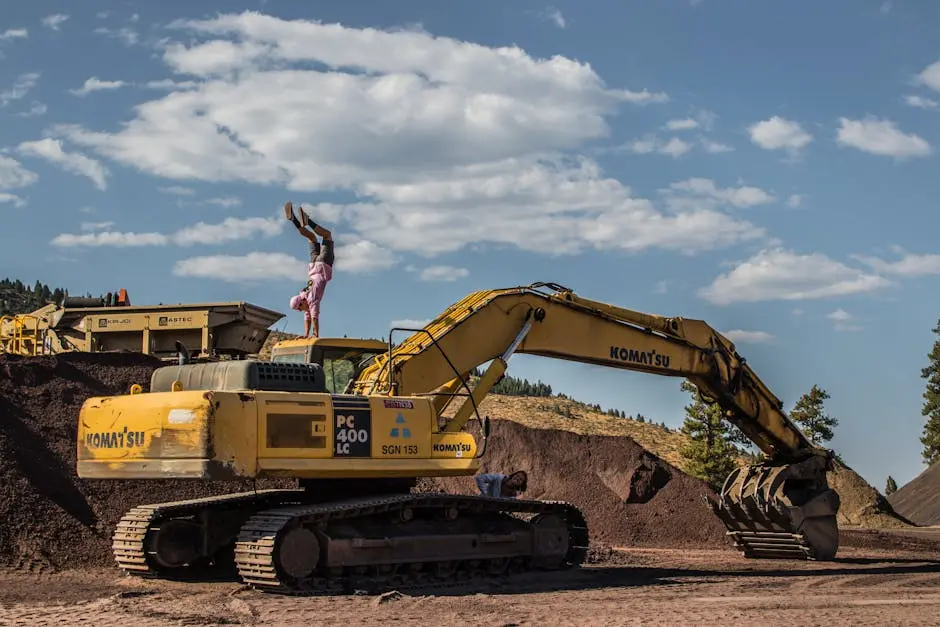Navigating the world of bulldozer finance in California can seem daunting at first, but with the right steps, you can master it with confidence and ease. Whether you’re a construction business owner or an independent contractor, understanding the ins and outs of financing will help you make informed decisions and secure the best deals.
1. Understanding Your Bulldozer Financing Options
From loans to leases, understanding the various financing options available is crucial. Each option has its own pros and cons, and knowing which one aligns with your business needs is the first step.
Loans are a popular choice as they provide full ownership once paid off. This can be a long-term investment if you plan to use the bulldozer extensively. Alternatively, leasing might be more suitable for those looking for lower monthly payments and flexibility. It allows you to upgrade your equipment more frequently. Consider the financial commitment and potential tax advantages of each option to determine the best fit for your needs.
2. Assessing Your Financial Health
Before you start financing your bulldozer, it’s essential to evaluate your current financial situation. This includes understanding your credit score, cash flow, and overall budget to ensure you can meet repayment terms.
A thorough assessment of your financial health can prevent future hurdles. Start by obtaining your credit report, which not only impacts the interest rates you’re offered but also the terms you’re eligible for. Regular cash flow analysis can help you understand if you can accommodate loan payments without straining your business operations. Balancing your cash flow with your expenses is key to ensuring that financing a bulldozer is a viable option.
3. Researching Lenders and Their Offers
Not all lenders are created equal. Investing time in researching different financial institutions, understanding their terms, and comparing offers can save you money and offer more favorable conditions.
Start by evaluating reputable banks that have experience in equipment financing. Some may provide lower interest rates while others offer more flexibility in repayment plans. Apart from traditional banks, consider looking into credit unions and online lenders as they often have competitive rates and unique offerings tailored for small businesses.
4. Preparing Your Documentation
Having your documentation ready and in order is a critical step in the financing process. From financial statements to proof of income, ensure all required documents are available to streamline the application process.
Documentation serves as the foundation of your financing application. Lenders will require evidence of your business’s financial stability, which includes detailed balance sheets, income statements, and tax returns. A clear business plan can also demonstrate the long-term viability of your investment in a bulldozer and assure lenders of your capability to manage repayment obligations effectively.
5. Negotiating Terms Effectively
Don’t shy away from negotiating terms with your lender. This includes interest rates, repayment schedules, and any possible hidden fees. A good negotiation can significantly impact the overall cost of your financing.
It’s important to approach negotiations with confidence and preparedness. Understand that lenders often have some degree of flexibility in their offers. By knowing the market rates and being clear about your financial position, you can negotiate terms that are financially beneficial.
6. Understanding Tax Implications
Tax considerations play a role in equipment financing. It’s important to understand how different financial arrangements might affect your tax liabilities and benefits to maximize your returns.
Leasing versus purchasing can result in different tax outcomes. For instance, leasing often allows you to deduct monthly payments as a business expense, whereas ownership can lead to asset depreciation benefits. It’s crucial to consult with a tax advisor to understand which option offers the best tax advantage for your specific situation, ensuring smart financial planning.
7. Reviewing and Finalizing the Contract
Before you commit, carefully review the entire contract to ensure an understanding of all terms and conditions. Getting a professional opinion from a financial advisor or legal expert can help finalize your decision with confidence.
Contracts can be daunting, filled with industry jargon and fine print that can be easily overlooked. It’s wise to approach this step meticulously. Pay attention to sections that delineate penalties, interest rate nuances, and terms of default. This due diligence will permit a well-informed decision, avoiding unforeseen financial pitfalls in your financing journey.

